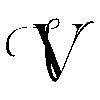When you see a stunningly realistic AI-generated portrait, your first thought is probably, “Wow, how did they do that?” We often focus on the how—the models like LeonardoAI or ImageFX, the clever prompts—but I want to talk about the what. What is it that makes a simple collection of pixels feel so real, so human?
I’ve spent countless hours in the digital studio, crafting prompts and watching the magic happen. I’ve learned that the true art isn’t just in the technical details; it’s in the intention behind them. It’s about looking at the blank screen and asking yourself, “What story do I want to tell?”
Think about a traditional portrait photographer. They don’t just point and shoot. They interact with their subject. They find the right light to highlight their features, the right expression to capture their personality. They create a connection. In the world of AI art, we can’t have a direct conversation with our subject, but we can have one with our imagination. The prompt becomes a way to infuse that connection, to give the image a soul.
For example, I recently wanted to create a portrait of a woman who felt both strong and serene. I could have just typed, “portrait of a beautiful woman.” The result would have been… fine. But it wouldn’t have been her. Instead, I used a prompt that was more like a story:
"Close-up portrait of a serene young woman, captured in soft, ethereal light streaming through a window. She has a thoughtful, faraway look in her eyes, as if lost in a dream. Her hair is loosely tied, with a few strands escaping in the gentle breeze. Cinematic composition, hyper-realistic, 8K, shot on a high-end DSLR, soft focus."
The difference was night and day. The details—the “ethereal light,” the “thoughtful, faraway look,” the “loose hair”—weren’t just technical specifications. They were brushstrokes that painted a character. They transformed a generic face into a portrait with a history and an emotional depth.
This is the real frontier of AI portraiture. It’s not about replacing creativity; it’s about amplifying it. It’s about using these incredible tools to bring our wildest ideas to life, to give a face to the characters in our heads, and to explore the infinite range of human expression without ever needing a model release form. So, the next time you’re creating, don’t just think about the prompt. Think about the person you’re bringing to life, one pixel at a time.
A New Kind of Photo Shoot with AI Models
As someone who has always been fascinated by photography, the world of AI-generated portraits feels like stepping into a parallel universe where the rules of reality no longer apply. We’re used to thinking of a “photo shoot” as a physical event—a camera, a model, a location. But what if the location is your mind, and the camera is a powerful AI model like LeonardoAI?
This is the future we’re living in, and it’s exhilarating. With a few clicks and a well-crafted prompt, you become the director, the stylist, the lighting designer, and the photographer all at once. It’s a creative freedom that was unimaginable just a few years ago.
Let’s break down the “digital photo shoot” process:
- Casting Your Subject: You don’t need a model agency. You just need an idea. Do you want to create a portrait of a cyberpunk rebel with neon streaks in her hair? A classic, black-and-white portrait of a vintage Hollywood star? The AI is your endlessly patient and versatile model.
- Location, Location, Location: Forget scouting for the perfect spot. Your “location” is a descriptive line in your prompt. “A bustling Tokyo street at night,” “a quiet, sun-drenched cafe,” or “the misty highlands of Scotland”—the AI renders it all with stunning detail. This is where you can be truly imaginative and create settings that would be impossible in the real world.
- Mastering the Light: This is where the magic really happens. Lighting is everything in photography, and it’s just as important in AI art. A single phrase like “cinematic lighting,” “golden hour,” or “harsh overhead light” can completely change the mood of the portrait. It’s about understanding how light tells a story and using that knowledge to guide the AI.
I’ve found that the best AI portraits often feel like they were captured by a master of their craft, not generated by a machine. This is because the creator behind the keyboard has put in the thought and the effort to mimic the techniques of real artists. The AI is a tool, a powerful one, but it still requires a human eye to direct it.
In the end, this isn’t about replacing the old ways of creating. It’s about adding a new, vibrant color to the palette. It’s about giving anyone with an idea the power to create a masterpiece. It’s a new form of “photo shoot” where the only limits are the ones we put on ourselves.

